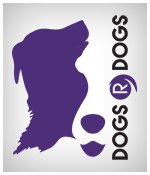Mindful Flinging!

Raising Ragnar – Helpful vs Unhelpful Patterns
27th February 2020
7 Reasons Why Spaniels Don’t Make Good Pets Unless They Are Trained Appropriately.
2nd July 2022As human beings we have a tendency towards absolutes, and this can be carried forward into the dog training world. This can be very damaging as people and dogs express a range of different personalities which cannot all be dealt with using extremes.
Ball throwing for dogs seems to be one of these topics and I would like to advocate for a bit of middle ground with this.
One extreme is that you should never throw a ball for your dog because it can cause physical injuries and can, in excess, cause mental problems due to over arousal.
The other extreme is where the dog only ever is exercised by throwing a ball and never given a chance to do anything else.
In my opinion both these cases are not really very helpful to the dog or to the owner.
Excessive ball throwing can cause physical problems, dogs can injure legs, backs, necks and teeth.
Ways to help minimise the risk of injury during ball throwing can include: –
- Throwing the ball into longer grass so that the dog has to slow down to locate the ball with their nose
- Teaching the dog to wait and run to the ball after it has stopped moving
- Using a ball that doesn’t bounce very much to avoid the dog going up after the ball and landing awkwardly
- Throwing the ball up hill so that gravity helps to slow the dog and reduces the force in their front legs.
Excessive ball throwing can also cause arousal issues which can lead to behavioural problems.
Ways to help minimise the risk of over arousal causing issues can include: –
- Teaching the dog to offer to sit before you throw the ball, this helps them to reduce arousal by helping them to focus and work out how to get you to throw the ball
- Teaching the dog a word which means – you are allowed to chase the ball that I am throwing. In the absence of this word, you teach the dog not to chase the ball. This makes sure that the dog remains in a thoughtful state of mind even thought they are having a good game.
- Only do a small number of repetitions before putting the ball away, teaching an ‘All Finished’ cue which lets the dog know that the game is over for the time being. The dog can then go back to pottering around for a while before the game starts again.
The total absence of being able to usefully chase and capture balls and other toys can also cause mental and physical problems.
Dogs who have a strong hunt/chase drive who are not allowed to express this instinct productively can become very stressed. This can lead to behavioural issues and also to physical problems as the stress manifests itself, quite often in the form of auto immune problems or gut issues.
I encourage all of my clients to find the correct middle ground for each dog as an individual. Play is a powerful relationship building tool and also it can become a very powerful reinforcer that we can use to motivate dogs to respond to cues in very challenging environments.
The reality is, that if you have any type of working, hunting or herding breed or a mix of these breeds then the chances are very high that they will need to express the instinct to chase things.
If we channel this instinct through play then we can teach our dogs that we hold the key to all things amazing. A combination of managing their access to successfully chase and capture real prey items alongside teaching them that when we offer to play with them, their chase is always followed by a capture, we can teach our dog’s that chasing a pseudo prey item (toy) is more productive that chasing a real prey item (squirrel).
Domestic dogs are not driven to hunt because they are hungry, it is because it makes them feel good. If we can teach them that trying to chase real prey is very unproductive then they will choose the more productive option – toys. This then puts us in control of when and where they chase which makes it safe for all concerned.
We can use the opportunity to chase and capture a toy as a reinforcer for any behaviour that we would like them to perform. The most important one being recall in an off-lead situation.
The other reason that I encourage my clients to play with their dogs is that it is fun! It builds a very strong relationship with your dog and, we can all do with a bit more fun in our lives 😊





